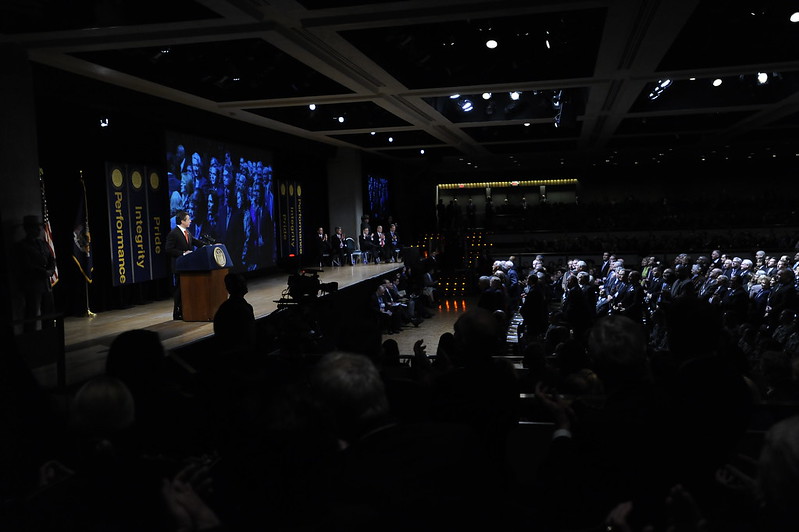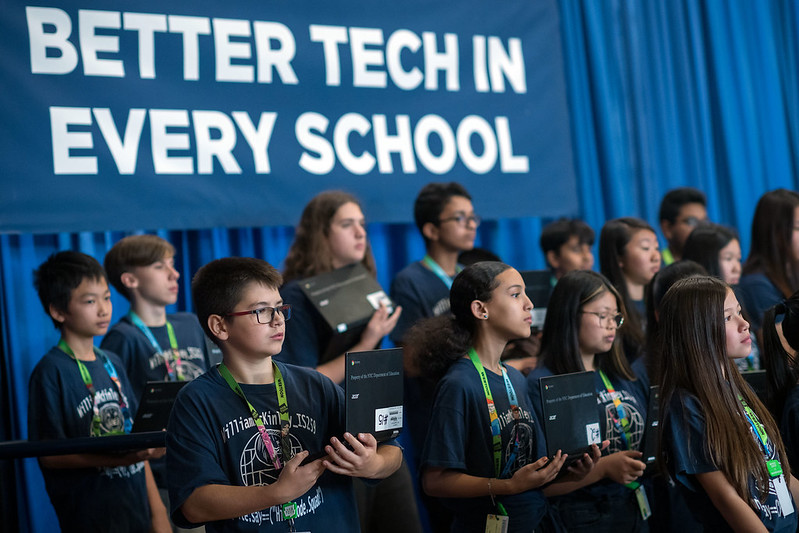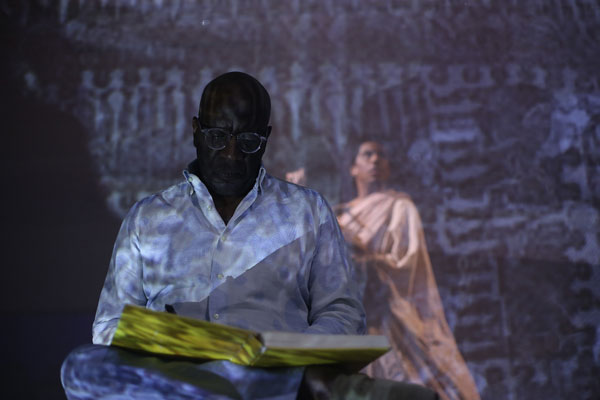Campaign Finance Reform is Good, Term Limits and Outside Income Cap Must Come Next

(photo: Governor's Office)
If you have ever given money to a political candidate, you’ve probably received a follow-up email asking you to “rush $3 today to help us reach our goal” or “send in $10 now to show we’re here to win.” I’ve sent quite a few of these emails myself, and I don’t think I would’ve raised more money in a single filing period than any candidate for New York State Assembly ever has if I didn’t. But trust me when I tell you that sending these emails is the worst part of my job as a candidate.
I’m running to unseat my local New York State Assembly member, Dan Quart, on the east side of Manhattan. It was always going to be an uphill campaign because he had raised over $739,000 when we started. When we launched our campaign, I was dismissed by political insiders who said I’d never be able to compete with my opponent’s “prolific” fundraising. I decided to run because I believed my message of bringing a new generation of leadership to Albany would resonate with the people in my district.
It did. And we are doing more than just competing. We made an effort to be present in the community and we earned the support of thousands of residents. We sent lots of annoying emails, raised that record amount of money, and got attacked for it by the same people who said we could never raise it. Now we're going to use it to compete in an electoral system designed by incumbents to deter primary challengers like me.
The maximum individual contribution in my race—where roughly 10,000 people will vote in the June Democratic primary—is $4,700. That’s 68% more than what you can give to someone running for President of the United States. In New York, high contribution limits mean that incumbents can leverage name recognition and pre-established donor networks to outraise primary challengers or keep them out of the race altogether. My district, for example, hasn’t had a contested Democratic primary for about as long as I’ve been alive.
A new system of public campaign financing set to take effect in 2024 would reduce contribution limits to campaigns for state offices and match donations under $250 with at least six times as much money in public funds. Lower contribution limits and a matching program for small donations should mean more competitive primaries across the state and more new voices in Albany. That’s great, but money’s corrosive effect on our politics isn’t just a function of our broken campaign finance system.
In Albany, New York State legislators now earn $110,000 from taxpayers for what is still considered a part-time job and collect outside income as they wish. My opponent, for example, collected at least $100,000 in outside income in 2018 alone. New Yorkers deserve representatives whose financial interests don’t conflict with their obligations of public service. That’s why I’ve pledged to serve my constituents full-time and forego private sector opportunities. But individual pledges aren’t enough. We need real reform that ensures our representatives have only one boss: the people.
Unfortunately, efforts to regulate salary and limit outside income have fallen apart. A commission co-created by Governor Cuomo and the state Legislature recommended a three-phase salary hike for legislators—rising to $130,000 by 2021—and a cap on outside income totaling 15% of legislators’ base salary. Despite the fact that the cap was based on limitations currently in place for members of Congress, New York courts ruled against it. Legislators could pass a bill designed to limit outside income right now, but if you’re familiar with New York’s corruption problems, you’re probably not holding your breath.
New Yorkers are used to politicians using public office for personal gain. That’s why young people running to replace them should make ethical leadership one of our guiding values. It’s why I support term limits for all elected offices and a ban on outside income for all legislators. Because if we’re going to change how we run for office, we should change how we’re compensated when we win too. My generation is just getting started in government, but before we’re done we can get money out of politics, politicians who work for the people, and fundraising emails out of your inbox.
***
Cameron Koffman is a Democrat running for New York State Assembly in Manhattan’s 73rd District. On Twitter @Cameron2020NY.
***
Have an op-ed idea or submission for Gotham Gazette? Email This email address is being protected from spambots. You need JavaScript enabled to view it.
Investing in 5G is Crucial for Ensuring High Quality Education for New York Students

technology in schools (photo: Ed Reed/Mayor's Office)
21st century education requires 21st century innovation. If we want students to think critically and creatively to learn to solve problems and succeed in today’s modern world they also need and must have access to modern technology.
A decade ago, laptops, tablets, desktop computers, and internet access were just beginning to be introduced into schools and classrooms. Today, these tools are commonplace across New York and the nation, integrated into lesson plans and required for homework completion. And although cellphones can sometimes be distracting to students in school, more curriculum and education resources are being developed for mobile devices than ever before.
However, the classrooms of tomorrow will feature technology that today seems like science fiction: Virtual reality that lets teachers instruct students remotely in real time; augmented reality that students can use to conduct complex experiments; robots that interact with students and help monitor their learning progress; super high-speed connectivity that allows for massive amounts of information to be downloaded in just a few seconds.
Students now in the K-12 system, members of so-called Generation Z, are tech natives; screens, social media and surfing the ‘net are as natural to them as breathing, and this has forced teachers and administrators to upend traditional instructional models.
But it’s the incoming crop of students, dubbed Generation Alpha, who will force the true revolution of education. Born beginning in 2010 – the same year Apple debuted the iPad – these kids will be fully tech-integrated, having never known anything other than the modern digital age.
If the education community fails to adapt to meet the needs and expectations of this new crop of students, we risk losing them altogether.
A 2013 Gallup poll of 500,000 students in grades five through 12 found that nearly eight in ten elementary students were “engaged” with school, but by high school, that number had dropped to four in ten. Once they got into their teenage years, students reported that school left them feeling “bored” and “stressed” instead of excited and engaged.
This phenomenon will only worsen if we don’t rise to the challenge of educating the next generation. To do so, New York must make investments now in high-speed connectivity, ensuring that every child across the state has access to the most up-to-date technology that will be necessary for success.
5G, the next evolution of wireless connectivity, is not only essential to this success but also to ensuring that New York leads the nation in creating a modern education system that truly matches needs of the modern world.
Governor Andrew Cuomo is right for recognizing that the development of the small cell technology is necessary for making 5G a reality across New York. The governor made clear in his executive budget proposal that streamlining the process for establishing a statewide small cell network is crucial for making sure all New Yorkers have access to high-speed broadband service.
Access to high-speed networks is also important in higher education, enabling students and faculty around the state, the nation, and even the world to communicate and collaborate, which is the bedrock of the academic experience as well as the foundation for our economic well-being.
Improvements in connectivity will only further enhance the ability of the higher ed community to work together and share information, facilitating research breakthroughs that help build our economy and keep us on the cutting edge.
Better connectivity will also improve distance learning, an increasingly popular way to provide access to college classes for a wide variety of “nontraditional” students, like military personnel, single mothers, or mid-career professionals.
These students cannot, for reasons of transportation, childcare, or other challenges, attend regularly scheduled classes in person. Enhancing distance learning opportunities will help them further their education and get better jobs, improving the quality of life for them and their families while also helping to boost the state’s economy.
New York has long recognized the benefit of technology in education. In 2014, state voters approved the Smart Schools Bond Act, authorizing the issuance of $2 billion worth of bonds to pay for upgrades and advancements – including in broadband or wireless connectivity for schools and their communities.
But if investment is not made to improve the statewide network, these local improvements will be for naught and that money will be wasted.
New York is clearly moving in the right direction when it comes to making sure school-age kids are getting the sound, basic education to which they are constitutionally entitled.
The state Education Department recently released the latest data on graduation rates and found they’ve risen by 7.3 percent for students who entered high school in 2015 compared to those who did so in 2006. In addition, the achievement gap between students of color and their white peers has diminished between 1.5 and 6.8 percent.
New York must keep this progress going by taking the lead in building the broadband infrastructure that gives all New Yorkers access to modern technology and connectivity they need to succeed and thrive.
***
Andrew Rasiej is the founder and CEO of Civic Hall. On Twitter @Rasiej.
***
Have an op-ed idea or submission for Gotham Gazette? Email This email address is being protected from spambots. You need JavaScript enabled to view it.
The Fundamental Right to Art and Culture for All

A Walk Through Slavery at The Billie Holiday Theatre
Many New Yorkers were stunned when the news hit in 2019 that Weeksville Heritage Center, the preservation site of one of America's first free black communities during the 19th century, would need to close its doors within months without an immediate influx of cash. Given the current funding realities in institutions serving communities of color, those of us leading African, Latinx, Asian, Arab, and Native American-focused (ALAANA) arts and cultural institutions were markedly less surprised.
A 2017 Helicon Collaborative study analyzed funding trends across the country and found that out of 41,000 cultural groups, just 2 percent received 58 percent of all contributed revenue. The organizations that received the majority of funding focus primarily on Western European arts, and serve upper-income, predominantly white audiences.
Having spent 16 years leading major initiatives in mainstream, predominantly white, non-profit institutions, before leading an institution of color, I have a foot in each world, and a hard-to-reconcile perspective on sustainability across institutions. There are many institutions like The Billie Holiday Theatre that understand the tenuous place that many of us find ourselves. These institutions have created great art for decades and were forged in cultural movements of resistance in a nation that has not always upheld its promise of “liberty and justice for all.”
These institutions are important to communities of color not just because of their contributions to creating art, but their contributions to bridging the racial wealth gap and to community development. According to a 2017 study by Mark Stern and Susan Seifert, cultural organizations encourage revitalization because they firm up social capital and get individuals involved in their communities.
Despite the overabundance of data that demonstrates how arts contribute to the economic development of neighborhoods, there have been inadequate investments in arts and cultural institutions in low-to-moderate income communities. Persistent disinvestment and marginalization have left arts organizations of color fragile. In fact, by the mid-nineties, 87% of the black theaters founded in the 1960s and 1970s went out of business and no great shifts or strategies have materialized to disrupt this trend.
Using arts in Bed-Stuy within the conversation of reparations, which is now a national one, it might look something like the following. According to The Brooklyn Community Foundation 2012 Neighborhood Report, the median New York City and State arts funding was $6.26 per resident compared to $2.44 in Bed-Stuy. Over more than half of a century, this disparity results in $30 million of underinvestment or $588,280 annually based on median population numbers.
How do we reverse this underinvestment and begin our journey towards true arts equity? It starts with engaging donors, private funders, government funders, boards, artists, and community members. If nothing else, this new journey requires, in the words of Toni Morrison from the Bluest Eye, “seeing in the new pattern of an old idea the Revelation and the Word.”
There are glimmers of hope. The City of New York's Create NYC cultural plan is changing the landscape of taxpayer funding, combined with investments from organizations like the Ford Foundation that have contributed to social justice and human dignity worldwide. In 2017, The New York Community Trust and the Doris Duke Charitable Foundation co-commissioned a report from Yancey Consulting to understand the health and viability of ALAANA arts groups in NYC; in 2018, the Mosaic Network and Fund was established. Together, city government and those foundations, as well as others, are engineering a paradigm shift in the growing movement towards greater arts equity.
But more can be done: we must ensure the fundamental right to art for all people, especially the most vulnerable people in our society, and now is the time to fill those voids of historic disinvestment, bridge the racial wealth gap, and build true equity for all in the arts.
To do this, ALAANA institutions must be willing to open new windows and consider the world anew, while philanthropic and government partners should throw out the 20th century playbook and collectively work together with ALAANA leaders, artists, and communities to shape a new path forward together.
In the words of Audre Lorde, let’s “define and seek a world in which we can all flourish.”
***
Dr. Indira Etwaroo is Executive Director of The Billie Holiday Theatre at Bedford Stuyvesant Restoration Corporation.
***
Have an op-ed idea or submission for Gotham Gazette? Email This email address is being protected from spambots. You need JavaScript enabled to view it.




